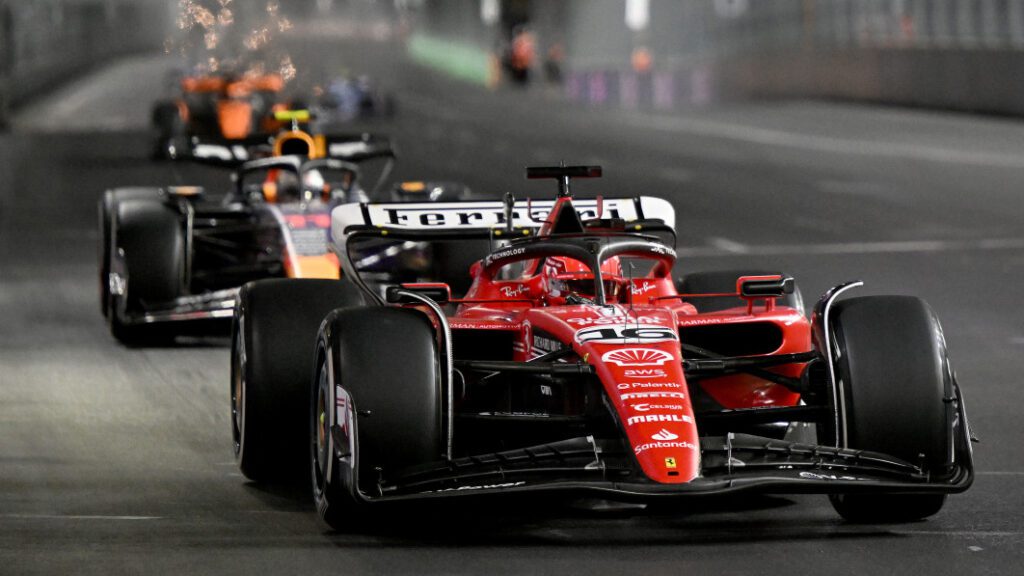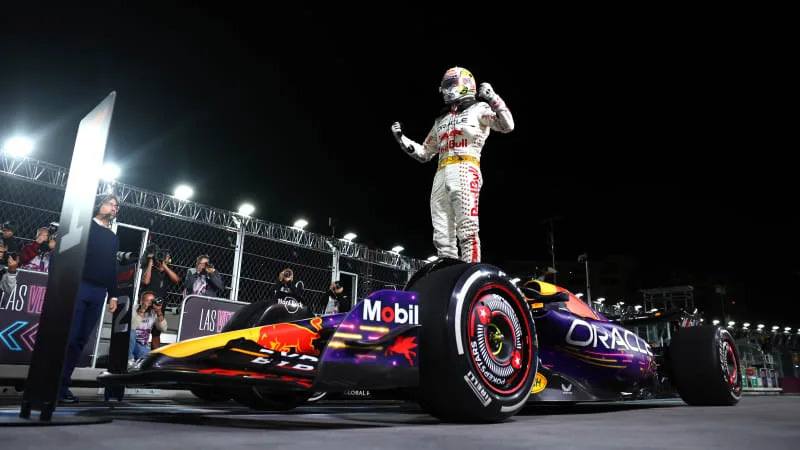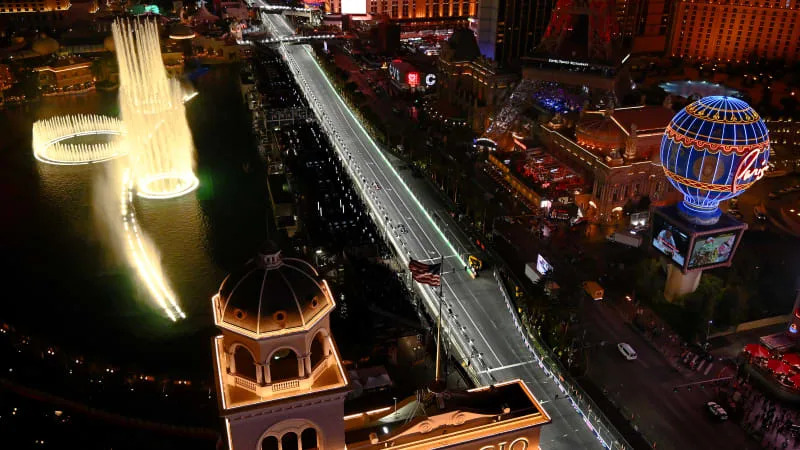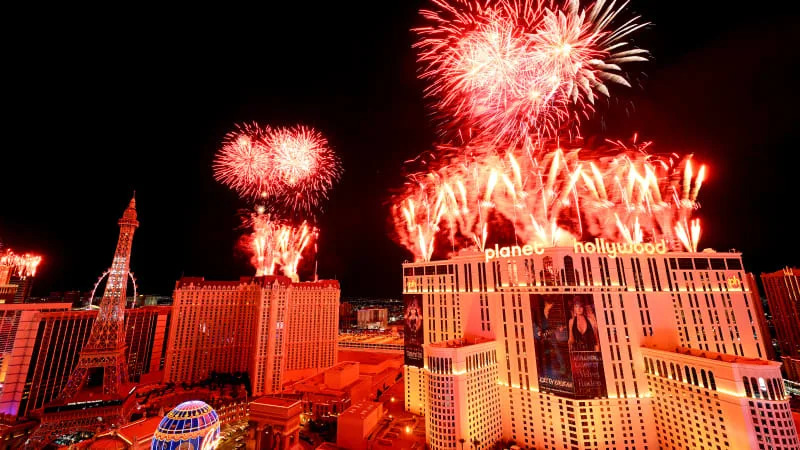Las Vegas Grand Prix: 9 things I learned attending the F1 race in 2023

Attendees at last weekend’s first-ever Las Vegas Grand Prix are still decompressing after all the late-night festivities and the spectacle of 200-plus-mile-per-hour F1 cars racing down the Strip. I was there from start to finish, documenting the results along the way. Now that I’m safe and sound in my quiet home more than 2,000 miles away, I can put my stream-of-consciousness thoughts down on pen and virtual paper.
Here are 9 things I learned attending the inaugural Las Vegas Grand Prix in 2023:
Things did not get off to a great start
In fact, the entire event started off horribly. As has been widely reported here and pretty much everywhere else, the very first time the cars hit the track for the initial free practice session, disaster struck after just a few laps had been completed. We won’t go into the weeds to break it all down again — see here for all the sordid details — but suffice it to say there’s a really good reason that a large number of Thursday-night attendees are looking for some sort of compensation. I wondered out loud while in Vegas if those who were let down on Thursday might get tickets for next year’s outing as a gesture of good will, but we’ll just have to see how that all plays out.
Oh, it’s also worth mentioning that those who were indeed in the stands on Thursday before being unceremoniously asked to vacate the premises later in the evening were loudly awoken from their slumber several hours later once the cars finally got back on the track for the second free practice session. I couldn’t sleep through it, sleeping in a room directly on the race track’s longest straight and only five floors up, but at least I had a good view out of my windows.
There was rapid improvement
Those fortunate enough to have multi-day tickets were treated to a much better show on Friday night. A special shoutout has to go to the Ferrari team that managed to get Carlos Sainz’s heavily damaged car back together, seemingly no worse for wear. Friday night’s qualifying saw Charles Leclerc and Sainz set the two fastest times, which made it feel even more incredibly asinine that Sainz was docked 10 positions on the grid for Saturday’s race. The stewards can point to as many rules as they like, but that was a deeply unfair ruling. If there truly is no leeway the way the rulebook is written, that rulebook needs a rewrite, stat.
Most importantly, the racing was excellent
Friday night’s qualifying session and Saturday’s race were stupendous to watch live. I may complain that the late start made things awfully difficult for those who had to travel from the eastern side of the country (ask me how I know), but racing under the lights really is the best way to put Vegas in the proper spotlight. Pomp and circumstance is the name of the game in Formula 1, and that’s exactly what the first-ever Las Vegas Grand Prix delivered.
In the end, Max Verstappen won the race, followed by Leclerc and fellow Red Bull driver Sergio Perez. The last-lap pass that Leclerc executed to secure second place was, in my mind, the most exciting part of the race. Even if the championship had already been decided, and even if it felt like a foregone conclusion that Max would finish first, the on-track action was very, very good.

Solid track layout
Having visited Las Vegas many times in the past, I did not have a clear understanding of exactly how Formula 1 would construct a proper race track, especially one that would include a long portion of the infamous Strip. But they did it. I was fortunate to be seated in the curve that makes up turns 3 and 4 on the circuit, with a lovely view of the impressive digital sphere in the distance as the racers sped by. I was also able to check out other parts of the track in multiple different zones, and each area had its own unique view and vibe. Watching the cars fly by at well over 200 miles per hour before slamming the brakes ahead of turn 14 was another highlight.
In all, the circuit measures 3.8 miles, boasts three straightaways, 17 corners and 2 DRS zones that allow drivers more opportunities to pass.
But it’s pretty awful for pedestrians
It’s terribly difficult to get from one part of the track to another. Officials and planners laid the site out with names like North and South Koval Zones and East and West Harmon Zones, relying on cardinal directions and cross streets for navigation. It makes some sort of sense when viewed from overhead, but much less in person while walking down convoluted and narrow pathways between sections. The zones were not connected and each had its own ticketing (unless, I presume, you had some sort of terribly expensive all-access pass and the appropriate badge) and gates, and it was necessary to scan out of the zone if you wanted to get back in later. I saw plenty of people walk through throngs of people without scanning out, only to find out they couldn’t get back in, but I don’t know how that could be logistically solved. It’s a street course set up in between massive permanent structures — hotels, shopping centers, restaurants and the like — and wasn’t designed from the start to host a race.
Much has already been written about the impact on traffic, both foot and vehicular, affecting people who live or work in Vegas and weren’t there specifically for the race weekend. It was serious enough for Greg Maffei, CEO of Liberty Media (the group that currently runs promotion of F1) issued an apology to area residents for the disruption. Sort of… “I want to apologize to all the Las Vegas residents and we appreciate that they have their forbearance and their willingness to tolerate us,” he said, before adding, “We’re going to bring something like $1.7 billion of revenue to the area. So it’s not just for the benefit of fans who want to view. We hope this is a great economic benefit in Las Vegas. We hope this is the most difficult year with all the construction that went on and things will be easier in the future.”
Lots of money was spent
It’s not at all surprising to hear Maffei bring up the expected economic impact of the Las Vegas Grand Prix. The number he quoted in the ESPN article linked above was $1.7 billion — other sources including Yahoo quoted a lower $1.2 billion expected figure — but since I wasn’t around the accountings counting up all those Benjamins, we can’t confirm any final figures. I’m quite certain, however, that a lot of money was spent; from building the track and pit area to hauling in and setting up untold tons of material for seating areas and VIP lounges, bring F1 to Vegas was undoubtedly a pricey proposition. And judging by the clientele, ticket prices, celebrity appearances and, well, everything else we witnessed before, during and after the race, attendees were dropping cash left and right.
Betting was a big part of the race weekend. “The Las Vegas Grand Prix was the most bet F1 event in BetMGM’s history,” said Seamus Magee, Trading Manager, BetMGM. “The sportsbook took 3X the number of bets on the race than any previous contest.”
But who benefited the most from all that cash?
It’s no secret that wealthy people tend to reap the most monetary rewards whenever large sums of cash are changing hands. That seemed to be the case in Vegas over the racing weekend judging by the people I spoke with. I took every opportunity to talk to people who lived in the area or had traveled to help serve as workers for the event, and nearly everyone I spoke with said they hadn’t made as much money as they had expected. Several bartenders and restaurant staffers told me that lunch and dinner services were much slower than normal, and for workers who rely heavily on tips, that’s a serious problem.
I’m certainly no economist, but the impression I got from those I spoke with in person was that the ritzier the establishment, the busier. A worker at a virtual reality experience in the Miracle Mile shopping area opined that those attending the F1 race were not the typical Vegas clientele. By way of comparison, I overheard another attendee say the lines for the VR experiences in the official F1 trackside zones was several hours long. Anecdotally, the pricey STK steakhouse at the Cosmopolitan was absolutely packed; the more reasonably priced Pampas Brazilian Steakhouse at Planet Hollywood was decidedly less busy and offering coupons for 50% off to everyone who walked past.
I also overheard from a server at a large Casino that complaints were being fielded from gamblers at the most expensive tables who felt that they weren’t really being catered to in the same way they’d come to expect in Las Vegas, seemingly due to certain resources being shifted elsewhere to support the F1 race.


They’ll be back
Officials for Formula 1 and Las Vegas have already agreed to a 10-year partnership for the race to take place the week before Thanksgiving. A permanent 300,000-square-foot structure was put in place to house the pit area at a cost reported to be around $500 million. Deposits can already be placed for 2024. Clearly, everyone is expecting to be back again next year and for the foreseeable future.
But I probably won’t be
Will I go back next year? Probably not. There are several F1 fans on Team Autoblog, and I think we’d all like to take a turn attending the Vegas race. But I haven’t had my fill of Formula 1. Maybe I’ll see y’all next year from Miami.



